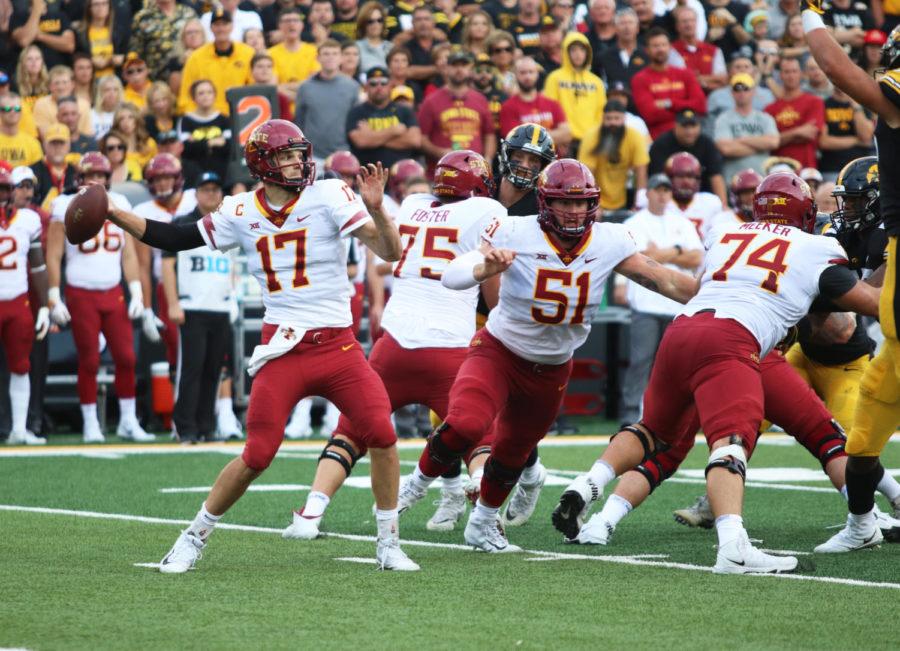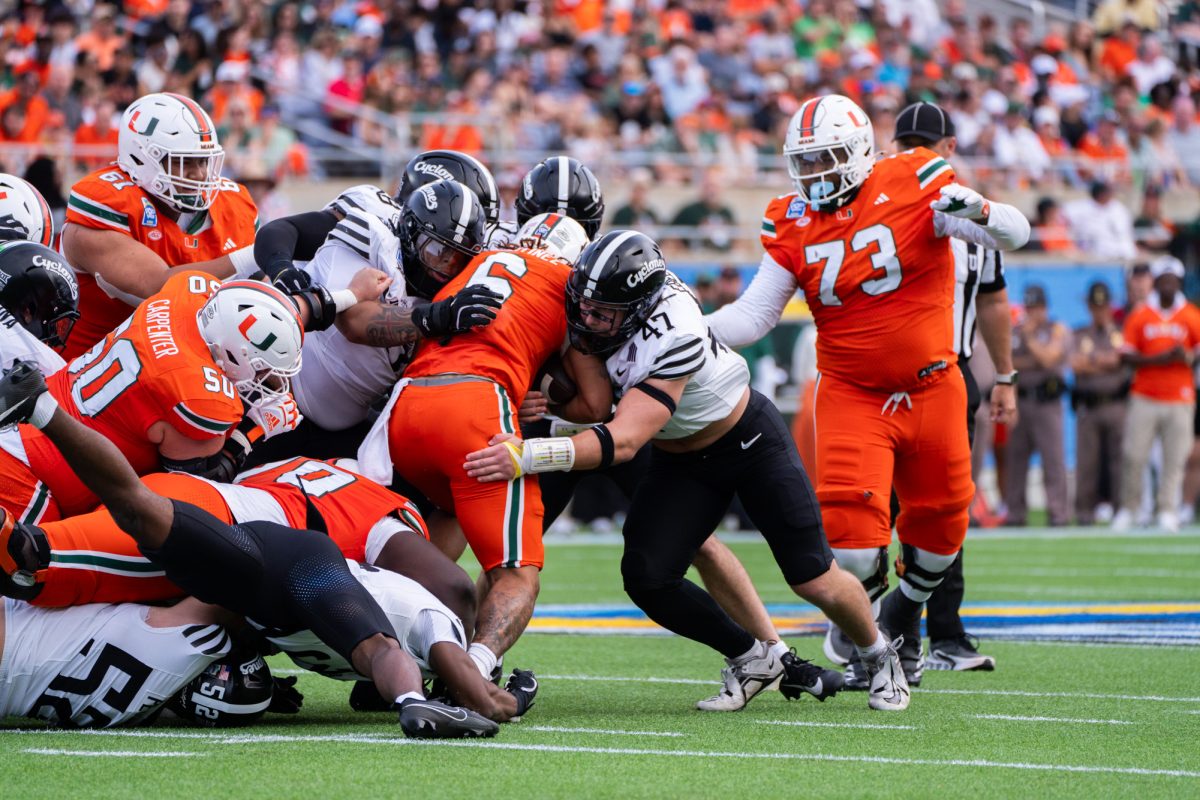Analysis: Conservative play-calling in second half halts early momentum
September 10, 2018
Less than 200 yards of offense over 60 minutes. Less than one yard per rushing attempt. Five-and-a-half yards per passing attempt.
There’s no way to sugarcoat it: Iowa State’s offense was just plain bad against the Hawkeyes.
Iowa State’s offensive output on Saturday was worse than any of its 13 games last season. In fact, Saturday was the first time in the Campbell era that the Cyclones have not been able to crack 200 total offensive yards. The Cyclones lost 13-3 and struggled all game with the Iowa defensive line. The Cyclones’ offensive performance was so muted that the team dropped 25 spots in Bill Connelly’s S&P+ ranking system, from 51st to 76th.
Naturally, the Cyclones want to improve heading into their game against the No. 5-ranked Oklahoma Sooners this Saturday (11 a.m. on ABC), but there is one real question that needs to be asked beforehand.
What happened to the play-calling?
The Cyclones’ first drive of the game was scripted to a tee, and it worked out almost exactly how coach Matt Campbell and co. wanted. Iowa State attacked the Hawkeyes in space with underneath routes, utilizing quick receiver and junior Deshaunte Jones and junior running back David Montgomery time and time again to keep the Iowa defense on its heels.
Up until the Cyclones got within the Iowa 10-yard-line, the offense was humming and running quickly. The no-huddle offense is something Iowa State has been working on and used to a positive effect in the season-opener that wasn’t against South Dakota State, and it was a net positive again on the team’s first drive in Kinnick.
Then, it just sort of…disappeared. The Cyclones didn’t appear to go back to the hurry-up offense the rest of the game.
Campbell said on Saturday that it was partly due to the adjustments Iowa made to counter the holes Iowa State had found early on.
“[Iowa] got an extra safety down in the box and went with a lot more Cover 3 than what they’ve had in the past,” Campbell said. “We didn’t protect well enough to be able to make the adjustments we needed.”
For example, the Cyclones frequently went four-wide on their first drive, with redshirt sophomore tight end Chase Allen lining up in the slot. As the game progressed, however, Iowa State used more 12 personnel — particularly in the early second half — with two tight ends in the formation (usually one of Chase Allen or Dylan Soehner and ‘F’ Sam Seonbuchner).
Using 12 personnel, generally used in tight-yardage situations and running downs by most teams, can tighten up the field and limit the offense’s opportunities to create mismatches in space.
The poor field position the Cyclones found themselves in for a bulk of the game (their average starting field position was the 22-yard line) limited the options available to Campbell and his play-calling “committee,” resulting in an extremely conservative strategy.
It was downright Iowa-esque.
Allen attributed the play-calling to losing the field position battle.
“You always gotta know where you are on the field, and that changes the type of plays that you’ll run,” Allen said.
The move was made, presumably, with the intention of getting more push against Iowa’s strong defensive line and establishing a run game.
It failed miserably.
Iowa State finished the game with a total of 19 net rushing yards on 25 attempts, and David Montgomery was held to just 44 yards on 17 attempts (2.6 yards per carry).
The Cyclones went against what they had used to succeed early on, and by the time the four-wide sets came back late in the second half, the game was slipping away from them.
Redshirt sophomore (and possible starting quarterback against Oklahoma) Zeb Noland said that the Cyclones suffered from first-game hiccups.
“First game quirks, I think that makes it difficult at times,” Noland said. “Working all the little things out, I think, will help us next week. We’ll know what to prepare for.”
Oklahoma presents a different challenge for Iowa State — The Sooners set up in a 4-2-5/3-3-5-over defensive formation and are built to play against up-tempo spread offenses, whereas the Hawkeyes lined up in a 4-3 base more often than not — so the Cyclones might open up the playbook, no matter who the starting quarterback is on Saturday.
First-game hiccups can be corrected, but the Cyclones have to get the offense clicking and be willing to take risks.
If they don’t, they run the risk of getting lapped by a transcendent Oklahoma offense.







